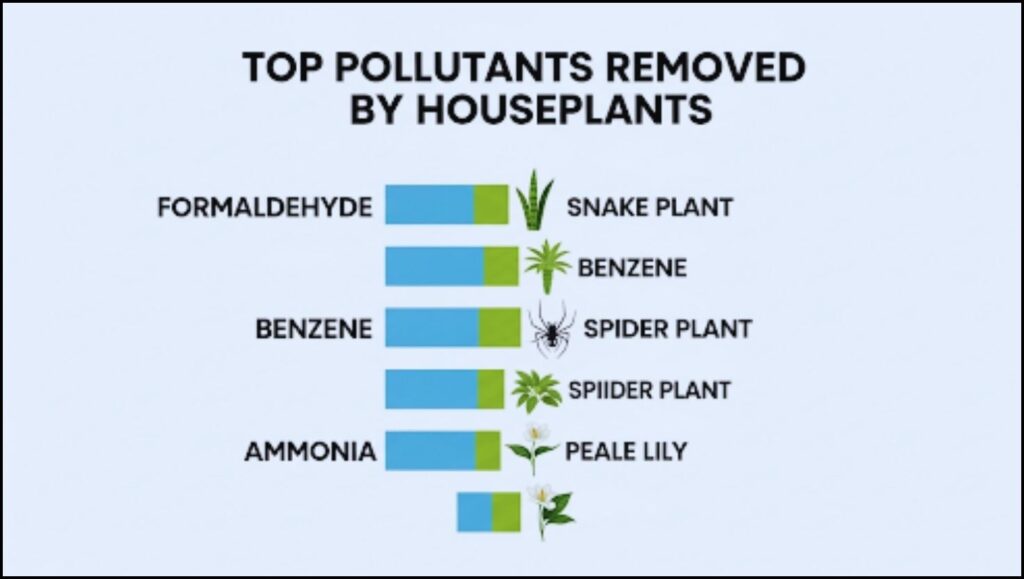A growing global trend sees homes and offices filled with greenery, driven by a dual belief in the power of houseplants. Consumers are increasingly selecting plants that bring good luck and purify the air, embracing both ancient cultural traditions and modern scientific research. This movement reflects a deeper desire to enhance personal environments, seeking benefits that range from cleaner air to positive energy and mental well-being.

Popular Plants and Their Purported Benefits
| Plant Name | Cultural Significance (Feng Shui/Vastu) | Scientific Finding (Air Quality) |
| Snake Plant | Believed to provide protective energy and absorb negativity. | Removes benzene, formaldehyde, xylene. Produces oxygen at night. (Source: NASA) |
| Money Tree | Associated with attracting financial prosperity and good fortune. | Effective at reducing toluene and other VOCs in lab settings. |
| Peace Lily | Symbolizes peace, purity, and healing. | Proven to remove ammonia, benzene, formaldehyde, and trichloroethylene. (Source: NASA) |
| Jade Plant | Known as a “friendship” or “money” plant, said to bring wealth. | Primarily known for its properties in traditional medicine; less studied for air purification. |
The Science Behind Air-Purifying Plants
The idea that houseplants can improve indoor air quality gained significant traction following a landmark 1989 study by the National Aeronautics and Space Administration (NASA). The NASA Clean Air Study found that common indoor plants could remove harmful volatile organic compounds (VOCs) like benzene, formaldehyde, and trichloroethylene from sealed environments. These chemicals are often emitted from synthetic materials, furnishings, and cleaning products found in modern buildings.
The process, known as phytoremediation, involves pollutants being absorbed through the leaves and roots of the plants, where microorganisms in the soil then break them down. Plants like the Peace Lily and Snake Plant were identified as particularly effective in the study’s controlled laboratory conditions.
However, scientists urge caution when applying these findings to a typical home or office. “The NASA study was conducted in a sealed chamber, which is very different from a standard house with regular air exchange,” said Dr. Michael Waring, a professor of environmental engineering at Drexel University, in research published by Nature. To replicate the study’s results, experts estimate you would need a very high density of plants—potentially hundreds in a single room—to significantly impact air quality.
The U.S. Environmental Protection Agency (EPA) concurs, stating that while plants can contribute to cleaner air, they should not be a substitute for proper ventilation, which remains the most effective method for reducing indoor air pollutants.

Ancient Traditions and the Flow of Energy
Long before scientific studies, various cultures attributed special properties to plants. The practice of feng shui, an ancient Chinese system of harmonizing individuals with their surrounding environment, places significant emphasis on the placement of living plants to attract positive energy, or chi.
“In feng shui, healthy, vibrant plants introduce vital life force energy into a space,” explains Priya Sher, a London-based feng shui consultant. “Plants with soft, rounded leaves, like the Jade Plant or the Money Tree, are often favored as they are believed to promote a smooth, positive flow of energy and attract prosperity.”
Similarly, in the Indian architectural system of Vastu Shastra, plants are considered living beings that can influence the energy of a home. A Tulsi (Holy Basil) plant, for example, is revered for its purifying properties and is believed to create a spiritual ambiance. The placement of these feng shui plants is often critical, with specific locations recommended to maximize their purported benefits for wealth, health, and relationships.
Popular Plants That Bring Good Luck and Purify the Air
Certain plants have become icons of this trend, celebrated for both their cultural symbolism and their scientifically-backed benefits.
The Resilient Snake Plant (Sansevieria trifasciata)
Known for being nearly indestructible, the Snake Plant is a favorite for both beginners and experts. It was a star performer in the NASA study for its ability to filter formaldehyde and nitrogen oxides. Uniquely, it performs Crassulacean acid metabolism (CAM) photosynthesis, allowing it to release oxygen at night, making it an excellent choice for bedrooms. In feng shui, its strong, upward-growing leaves are said to provide protective energy.
The Iconic Money Tree (Pachira aquatica)
With its distinct braided trunk and lush leaves, the Money Tree is a staple in homes and businesses seeking good fortune. Legend holds that a poor farmer in Taiwan prayed for wealth, discovered this plant, and became rich by selling them. While its air-purifying capabilities are less documented than the Snake Plant’s, it is still considered an effective air-purifying plant for general air improvement.
The Psychological Boost of Indoor Greenery
Beyond air quality and good fortune, experts point to another verifiable benefit: the psychological impact of being around nature. The “biophilia hypothesis,” popularized by biologist E.O. Wilson, suggests that humans have an innate tendency to seek connections with nature.
Numerous studies have supported this, showing that the presence of indoor plants can reduce stress, increase attentiveness, and improve overall mood. A 2015 study published in the Journal of Physiological Anthropology found that interacting with houseplants can reduce physiological and psychological stress.
“Whether you believe in the flow of chi or not, the calming green presence of a plant has a measurable effect on our well-being,” said Dr. Lena M. Andersson, an environmental psychologist. “It connects us to the natural world, which is especially important in our increasingly urban and digital lives.”
Ultimately, the motivation for bringing plants indoors is multifaceted. While the direct impact on indoor air quality might be modest in a typical setting, the combined benefits of aesthetic beauty, cultural resonance, and psychological well-being create a compelling case. As people continue to invest in creating healthier and more positive home environments, the popularity of these green companions is set to keep growing.
